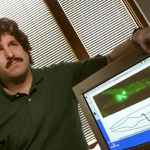Harvard Forest is not merely a picturesque domain but a vital climate change laboratory where researchers intimately observe and document the impact of climate change on forest ecosystems. Situated in Petersham, Massachusetts, this sprawling 4,000-acre forest has become a pivotal site for research on climate change, focusing on the resilience of forests amidst challenging environmental shifts. As the effects of climate change intensify, the decline of hemlock trees, once dominant in these woods, underscores a significant challenge that scientists aim to understand and mitigate. The ongoing changes in plant diversity and health reveal critical insights into the broader climate change impact on natural environments. These findings not only illuminate the immediate response of forest ecosystems to warming climates but also serve as a roadmap for future conservation and management efforts.
At the heart of the Harvard Forest lies a dynamic research platform exploring how shifting climatic conditions influence forest landscapes. This extensive woodland, representative of New England’s diverse ecological tapestry, serves as an open-air laboratory where phenomena like hemlock decline and its repercussions on biodiversity are meticulously studied. Researchers observe how alterations in climate patterns affect not just tree species but the entire ecological web, revealing a complex interplay between invasive species and native flora. By delving into these changes, scientists are uncovering critical avenues for enhancing the resilience of these crucial ecosystems in the face of ongoing environmental stressors. As discussions around climate preparedness unfold, the Harvard Forest stands as a beacon of knowledge and hope for future generations.
The Impact of Climate Change on Harvard Forest
Climate change has emerged as a formidable force, systematically altering the ecological landscape of Harvard Forest. As the climate transitions into warmer and wetter patterns, researchers like Emery Boose and David Orwig have observed profound changes in the forest’s structure and species composition. Given that Harvard Forest hosts over 100 research projects, data trends reveal increasing temperatures and shifting precipitation patterns, which directly affect forest ecosystems. The decline of the hemlock population, a keystone species in this region, is particularly alarming as it signals an ecosystem upset that may lead to cascading effects throughout the forest.
Moreover, the presence of invasive species, such as the woolly adelgid, exacerbates the effects of climate change on Harvard Forest. As warmer winters allow this pest to thrive, it accelerates the decline of hemlock trees, fundamentally transforming the forest’s makeup. The resilience of forests is being tested as native species struggle against invasive threats and changing climates. By documenting these changes meticulously, researchers hope to find strategies that bolster the resilience of the forest ecosystems affected by climate change, ensuring they can adapt and thrive in an unpredictable future.
Understanding Hemlock Decline in Harvard Forest
The decline of hemlock trees in Harvard Forest serves as a critical indicator of environmental health, echoing the broader impacts of climate change on forest ecosystems across New England. These evergreen giants play a vital role in regulating ecosystem functions, from soil chemistry to wildlife habitat. With their disappearing presence, other species, such as black birch, have begun to fill the ecological void left behind. Yet, this shift signals not just a change in tree species but also in nutrient cycling and habitat quality, potentially leading to long-term ecological consequences.
In addressing the hemlock decline, researchers are observing a narrative of loss intertwined with hope. Despite the overwhelming evidence of hemlock mortality due to invasive pests and climate stressors, efforts to cultivate resistance in hemlock populations persist. Ongoing research aims to identify remaining healthy trees that exhibit resilience to the woolly adelgid. This focus not only brings an opportunity for conservation but emphasizes the need for biodiversity in maintaining robust forest ecosystems in the face of climate changes.
The Resilience of Forest Ecosystems Amid Climate Change
One of the most striking themes at Harvard Forest is the resilience of forest ecosystems when faced with the challenges presented by climate change. Although the loss of certain species threatens the integrity of the forest, the emergence of new species indicates a dynamic and adaptive ecological framework. Black birches adapt quickly to the changing environment, creating new habitats and altering the nutrient dynamics that support other flora and fauna. Such transformations highlight that while climate change poses significant challenges, forest ecosystems exhibit remarkable resilience and capacity for recovery.
Researchers such as Jonathan Thompson emphasize that understanding the intricacies of these adaptive changes is crucial for future conservation efforts. By studying how different species respond to warming temperatures and humidity changes, scientists at Harvard Forest can develop strategies that promote resilience among various tree species and their associated ecosystems. This ongoing research illustrates the forest’s ability to evolve despite the pressures of climate change, reaffirming the importance of long-term ecological studies in informing conservation methods that nurture forest health and biodiversity.
Long-term Climate Trends Observed at Harvard Forest
Harvard Forest has been a beacon of long-term climate research, accumulating invaluable temperature and precipitation data for decades. As researchers analyze this extensive dataset, they have confirmed significant shifts in climate patterns consistent with broader global trends. The transition towards a warmer and more unpredictable climate has implications for biodiversity, forest health, and ecosystem services. Such comprehensive data enables scientists to discern subtle changes that may otherwise go unnoticed amidst daily weather fluctuations, highlighting the urgent need for action against climate change.
This wealth of historical data not only informs current research at Harvard Forest but also provides a critical framework for understanding future climate scenarios. As researchers delve deeper into the collected records, they are able to draw connections between climatic variations and ecological responses. This analysis is essential for predicting how forest ecosystems might adapt or falter under future conditions, reinforcing the importance of investing in long-term ecological monitoring to gauge the effectiveness of various environmental strategies amid the ongoing challenges posed by climate change.
Community Engagement in Climate Change Research at Harvard Forest
Collaboration and community engagement are central to climate change research at Harvard Forest. By fostering a communal spirit among researchers, educators, and the local population, Harvard Forest seeks to impart knowledge about the ecological changes occurring in the area while raising awareness about climate change impacts. Clarisse Hart exemplifies this commitment, emphasizing the importance of collective experience in witnessing and understanding the changes in the forest. Engaging the community enhances the research initiative’s impact and encourages active participation in conservation efforts.
Educational outreach programs aim to educate future generations about the importance of forest ecosystems and the imminent threats posed by climate change. By integrating hands-on learning experiences with scientific research, these programs cultivate a deeper appreciation for nature’s intricacies. This knowledge is vital, as it empowers individuals to become proactive stewards of their environment, advocating for sustainable practices that mitigate climate change effects and foster the resilience of local ecosystems.
The Importance of Data-Driven Research on Climate Change
Data-driven research is vital in comprehending the multifaceted impacts of climate change on forest ecosystems. At Harvard Forest, scientists utilize rigorous data collection methods to track changes in species dynamics, soil health, and climate patterns. The wealth of information accumulated over decades serves as a foundational tool for understanding and predicting future ecological shifts. By relying on solid empirical evidence, researchers can make informed recommendations regarding conservation strategies, adaptation methods, and community policies aimed at mitigating climate change’s adverse effects.
Furthermore, this emphasis on data encourages collaboration across disciplines, enabling scientists to draw on various expertise areas. This interdisciplinary approach offers holistic insights into the complex relationships between climate, ecosystems, and human activities. By merging ecological data with social and economic factors, researchers at Harvard Forest can better advocate for integrated solutions that address both environmental concerns and community needs, ultimately contributing to a more sustainable future.
Invasive Species and Climate Change Interactions
The interaction between invasive species and climate change presents a complex challenge for forest ecosystems. Harvard Forest serves as a prime example of how warming temperatures can facilitate the spread of invasive pests like the woolly adelgid, which threatens the health of hemlock populations. As these pests propagate more easily in milder winters, they disrupt the balance of native biodiversity, leading to significant shifts in species composition and nutrient cycling within the ecosystem.
Understanding the dual impacts of invasive species and climate change is crucial for effective management and restoration efforts. Researchers are monitoring how these invasive insects influence native species dynamics and the broader ecosystem, enabling them to develop targeted strategies to combat the spread of invasives while fostering resilience in native populations. This research is pivotal, offering insights into how ecosystems can endure and adapt amidst the twin pressures of climate change and invasions.
The Role of Local Communities in Forest Conservation
Engaging local communities in forest conservation efforts is essential for addressing the impacts of climate change at Harvard Forest. Community members possess unique insights and a deep-rooted connection to the land, making their involvement invaluable in preservation initiatives. By fostering partnerships with local stakeholders, researchers can enhance data collection efforts, ensuring that the ecological shifts observed reflect both scientific observations and community experiences.
Moreover, strengthening community ties through educational outreach programs not only raises awareness of conservation issues but also empowers individuals to contribute to local sustainability efforts. As public awareness of climate change grows, community-led initiatives can serve as catalysts for positive environmental action, cultivating a culture of stewardship that prioritizes the health of forest ecosystems. This collaborative approach reinforces the notion that effective climate change response requires a unified effort that integrates scientific understanding with community involvement.
Future Generations: Shifting Baselines and Climate Change
As climate change progresses, future generations will face a starkly different landscape shaped by the shifts occurring in Harvard Forest and beyond. The concept of shifting baselines highlights that each generation forms its expectations of what is ‘normal’ based on their personal experiences, which can differ significantly from those of previous generations. With rapid ecological changes underway, children growing up today may not have the same reference points for understanding forest ecosystems, especially with the decline of species such as hemlocks.
The responsibility lies with current generations to convey the significance of these ecological changes to foster environmental awareness in the younger population. Educators and scientists at Harvard Forest are tasked with bridging this knowledge gap, ensuring that the experiences and lessons of today are effectively transmitted to tomorrow’s caretakers of our natural world. Through such efforts, we can hope to inspire a renewed sense of connection and responsibility toward landscape stewardship, empowering future generations to advocate for the preservation of the forest ecosystems they inherit.
Frequently Asked Questions
What is the impact of climate change on the forest ecosystems at Harvard Forest?
At Harvard Forest, climate change has led to significant impacts on forest ecosystems, notably the decline of hemlocks due to invasive pests like the woolly adelgid. These changes are evident in increased light penetration through the canopy, a rise in black birch populations, and alterations in soil chemistry and nutrient flow. The forest’s long-term data collection supports these observations, revealing a trend towards a warmer and wetter climate that affects biodiversity and ecosystem resilience.
How does Harvard Forest research on climate change inform our understanding of forest health?
Research on climate change at Harvard Forest provides critical insights into forest health by documenting long-term ecological shifts. Observations such as the decline of hemlocks and the increase of black birches illustrate how invasive species and changing climate conditions can alter species composition, nutrient cycling, and habitat structure. This ongoing research helps predict future changes in forest dynamics and informs conservation efforts.
What evidence of hemlock decline is observed in Harvard Forest due to climate change?
Evidence of hemlock decline at Harvard Forest includes visible damage from the woolly adelgid, a pest exacerbated by milder winters. Hemlock trees, which traditionally dominated the landscape, are being replaced by black birch, significantly altering the forest community. Monitoring plots established by researchers show a drastic reduction in hemlock populations, indicating a troubling trend linked to climate change and its associated ecological pressures.
What are the signs of changing climate impacting forest ecosystems in Harvard Forest?
Signs of changing climate impacting forest ecosystems in Harvard Forest include a shift towards warmer winters, reduced snowpack, and the presence of invasive species. Researchers have noted variations in precipitation patterns, with heavy rainfall events occurring more frequently. These factors contribute to the observable effects on the forest’s structure and health, impacting both flora and fauna.
How do researchers at Harvard Forest study the resilience of forests in the context of climate change?
Researchers at Harvard Forest study the resilience of forests in the context of climate change through a variety of experimental approaches, including long-term site monitoring, soil heating experiments, and measuring gas exchanges between the forest and atmosphere. This comprehensive research helps to understand how forest ecosystems respond to stressors and threats posed by climate change and invasive species.
What role does long-term data play in understanding climate change impacts at Harvard Forest?
Long-term data plays a crucial role in understanding climate change impacts at Harvard Forest by allowing researchers to detect trends over time, such as temperature and precipitation shifts dating back to the 1960s. This data provides a robust framework for analyzing how gradual changes in climate influence forest ecosystems, biodiversity, and overall forest health.
What future implications might arise from the ongoing changes in Harvard Forest due to climate change?
The ongoing changes in Harvard Forest due to climate change may lead to significant implications for biodiversity, forest structure, and ecosystem services. If hemlocks continue to decline and black birches dominate, the forest will become a different ecological landscape, which may affect wildlife habitat, carbon storage, and water regulation. These shifts underscore the importance of adaptive management practices to mitigate potential losses.
| Key Points |
|---|
| Harvard Forest serves as a vital research site to study climate change impacts, demonstrating significant shifts in its ecosystem. |
| Senior ecologist David Orwig notes dramatic changes, including increased light in now less dense understories and the proliferation of black birches. |
| Long-term data collected since the 1960s has confirmed predictions of a warmer and wetter climate in the region. |
| The introduction of pests, like the woolly adelgid, poses significant threats to native hemlocks, affecting forest dynamics. |
| Researchers engage in various experiments to understand how ongoing climate changes affect soil, trees, and forest ecosystems. |
| The concept of “shifting baselines” highlights how future generations may not grasp the significance of loss in old-growth forests. |
Summary
Harvard Forest climate change presents a profound reality as researchers observe notable transformations within this historic landscape. The forest, once characterized by a lush and complex hemlock ecosystem, now displays alarming signs of alteration mainly due to climate change and invasive species. The ongoing research at Harvard Forest not only documents these changes but also emphasizes the relationship between human actions and environmental impacts, highlighting an urgent need for conservation efforts as we navigate this new reality.








